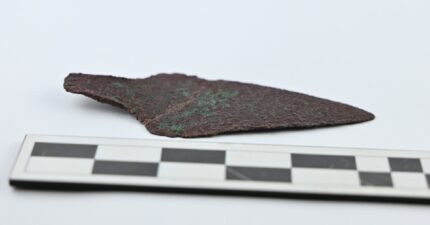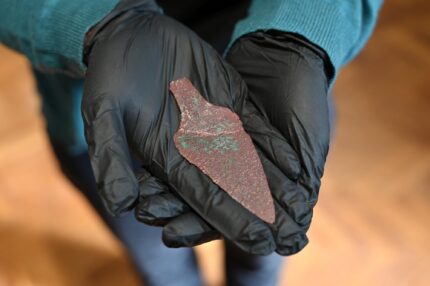

According to archaeologist Dr. Marcin Burghardt from the Jarosław museum, the dagger discovered in Korzenica can be dated to the second half of the third millennium BC.
“In Polish lands, this is a period of enormous changes related to, among others, with a change in the main raw materials for the production of tools. Instead of flint tools commonly used in the Stone Age, more and more metal products appear, heralding the transition to the next period – the Bronze Age,” noted Dr. Burghardt.
He added that in this new era, tools, ornaments and weapons were made of bronze, an alloy created by combining two metals: copper and tin.
However, the currently discovered dagger from Korzenica – as noted by Dr. Elżbieta Sieradzka-Burghardt, an archaeologist from the museum in Jarosław – was not cast in bronze, but made of copper. “So it predates the development of bronze metallurgy,” the archaeologist noted. “In the third millennium BC, items made of copper were extremely rare, so only those with the highest social status could afford them. There is no doubt that the dagger is not a local product,” added Dr. Burghardt-Sieradzka.
It likely originated from the Carpathian Basin or the Ukranian steppe. Archaeologists hope metallurgic analysis will pin down the dagger’s origin. The blade is now part of the permanent collection of the Orsetti House Museum in Jarosław. After conservation and further study, it will go on display in June as part of the museum’s exhibition devoted to the oldest prehistory of the Jarosław area.
* This article was originally published here








No comments:
Post a Comment